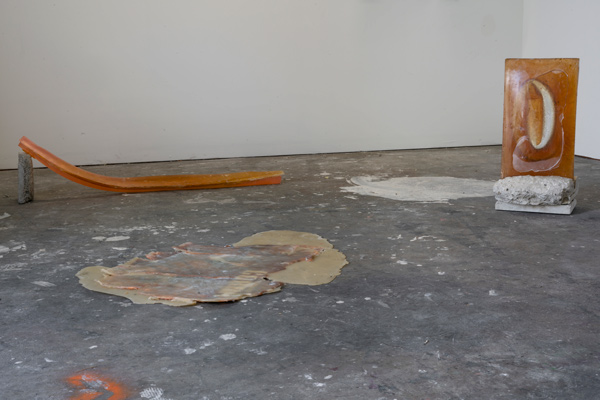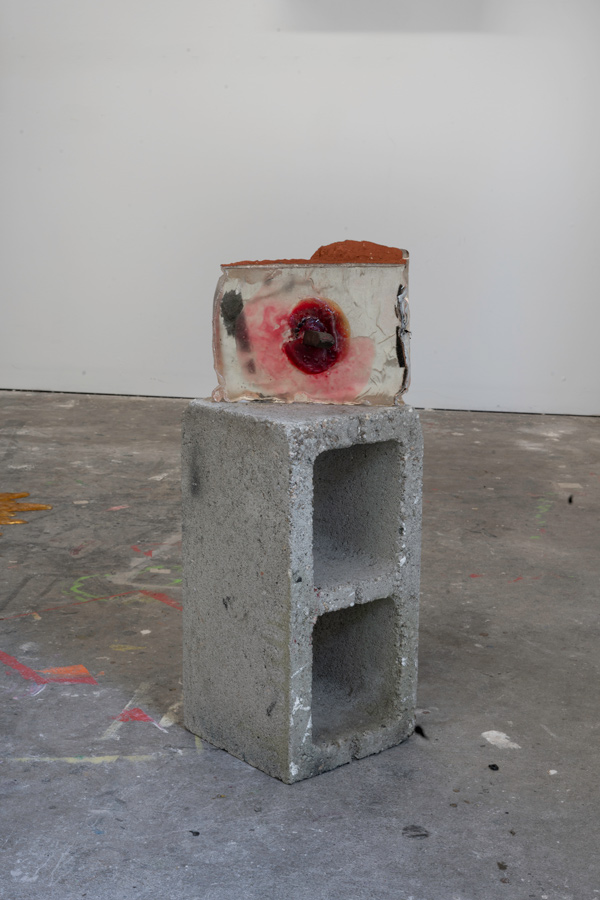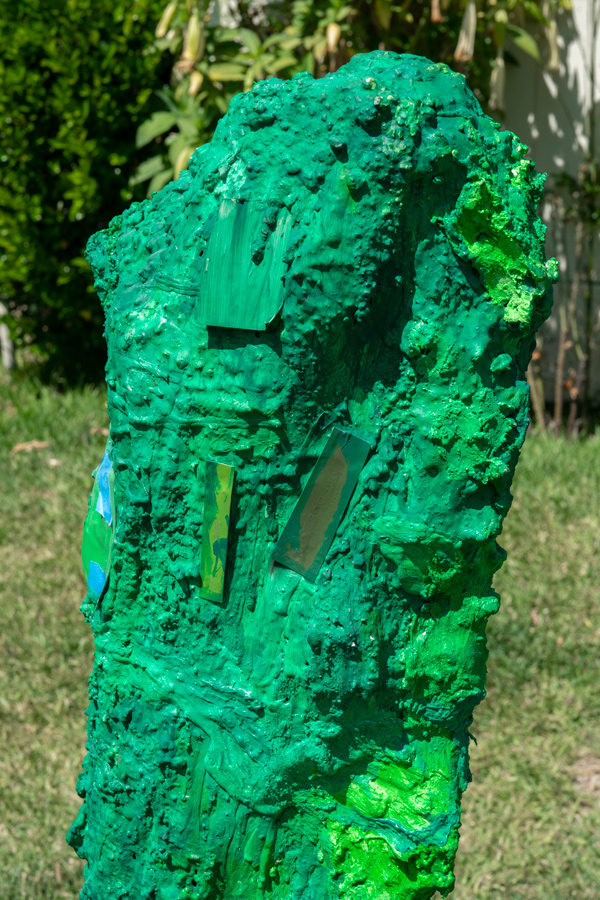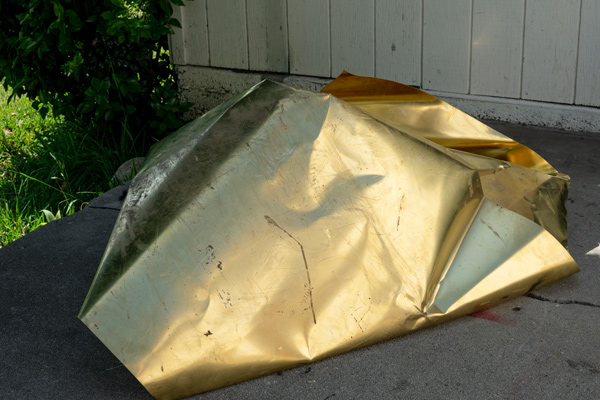Beauty and the grotesque, foreign and familiar poetically intersect in “the living + soft center” at Kate’s Little Angel, an exhibition space in a renovated garage in the back of Kate Eringer’s home (Eringer is contributor to Artillery’s Last Night column). Curated by Australian-transplant Ondine Charlesworth, “the living + soft center” brings together artists who deal with visions of organic, ephemeral materials that inherently speak to their personal experiences and the decomposition of both physical objects and the liminality/intangibility of memories. In its best moments, the exhibition is a romantic celebration of materials and how bodies react to them, use them, move with them, live with them, create them, and destroy them.

the living + soft center: Symrin Chawla, Max Cleary, Sessa Englund, Maggie Friedman, Julia Thompson, and Bri Williams, through June 15, 2019, at Kate’s Little Angel
Ephemerality is at the core of this show. The highlights are Julia Thompson’s sculptures, Sessa Englund’s trollsol, three renditions (2019), and Bri Williams’s No man was worthy to open the book (2019)and Blast (2019). Thompson’s molded pool noodles made of honey, molasses, jello and soap (and other materials) best recall the intimacy and ephemerality of our lived experiences and the imprints we leave behind. The organic nature of her materials engage touch, smell, and taste. I am reminded of the molded soaps from my grandmother’s house; the subtle, feminine smells, and slowly disintegrating forms of seashells and flowers between my fingers. The slippage between the body and the object rubbing off on each other and the unfixed, unstable nature of these objects give way for something deeper: a more psychological and experiential viewing.

the living + soft center: Symrin Chawla, Max Cleary, Sessa Englund, Maggie Friedman, Julia Thompson, and Bri Williams, through June 15, 2019, at Kate’s Little Angel
Sessa Englund’s trollsol, three renditions (2019) relate to Thompson’s pieces in their fleshy materials, which appear as if they could almost be from the body itself. Like a dried up sea creature, or some sort of alien footprint, their floor pieces are markers of space, yet possess an awareness that they will melt and decay to eventually leave nothing more than an imprint at most.
Bri Williams’s works employ materials similar to Thompson and Englund’s: a curtain coated in jelly, soap and resin and a wax brick stabbed with a railroad nail. Williams plays with the tension between soft and hard materials, and the permanence and transiency of concrete and soap. A heart, stabbed and bleeding, suspended in space.

the living + soft center: Symrin Chawla, Max Cleary, Sessa Englund, Maggie Friedman, Julia Thompson, and Bri Williams, through June 15, 2019, at Kate’s Little Angel
Max Cleary’s Polyp (gut) (2019), is the more impactful of his two photographic works, which depict sculptural objects. Perhaps due to his choice of medium, which creates a sense of remove, Polyp does not elicit the same level of emotional response as his three dimensional peers. Visually, he is on par with the grotesque relation to the human body, but it leaves one wanting more. Directly experiencing the sculptures depicted in Cleary’s photographs, rather than the facsimiles of the pieces, would heighten the sense of grotesquerie and recoil.

the living + soft center: Symrin Chawla, Max Cleary, Sessa Englund, Maggie Friedman, Julia Thompson, and Bri Williams, through June 15, 2019, at Kate’s Little Angel
Symrin Chawla’s Eurydice (2019) is a brass sculpture created during a 1-hour durational performance, which left behind many signs of the artist’s hand: fingerprints, smears of mud, dirt and scratches are scattered over the shiny, contorted surface. This is a stronger example of a facsimile—that of Chawla’s movements, and is a true relic of her body and its actions.
Ephemerality functions as evidence of the artists’s labor and bodies. Their materials elicit empathetic responses, engage the senses, and triggering memories, helping us explore our bodies’ roles in viewing and creating.
Photography by Karen Achar
the living + soft center: Symrin Chawla, Max Cleary, Sessa Englund, Maggie Friedman, Julia Thompson, and Bri Williams, through June 15, 2019, at Kate’s Little Angel. 615 Romulo St, Los Angeles, CA 90065. Instagram: @kateslittleangel


